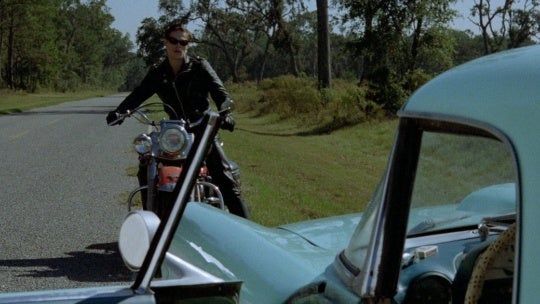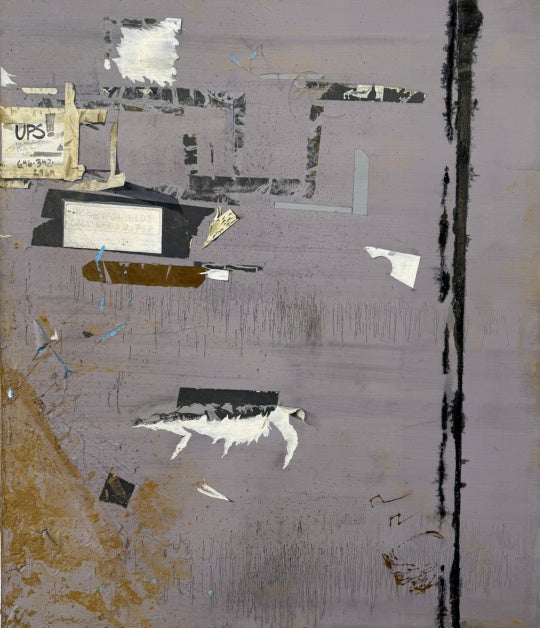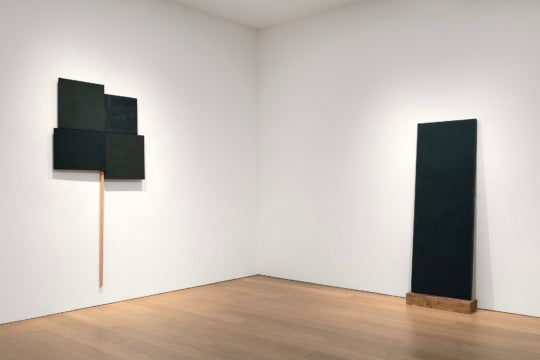“Camera Lucida” at the Jule Collins Smith Museum of Fine Art at Auburn University features eight artists who examine the various fictions, chronologies, and transitory qualities of video. Artists Jay Bolotin, Rob Carter, Joe Hamilton, Yeon Jin Kim, the duo Ligorano/Reese, Jillian Mayer, Rosa Menkman, and Rick Silva work with distinct and fully formed idioms. Exhibition curator Dennis Harper acknowledges that “many critics consider video to be this generation’s quintessential format for expression.” The exhibition layout speaks to the medium’s ubiquity. Screens are wall-mounted and comfortable chairs are arranged at an appropriate viewing distance with accessible headphone racks. The effect is not unlike a series of living room suites plucked from their residential spaces and dropped into a museum. The staging here implicitly acknowledges the domestic as a site for technological participation

The term “video” is far-reaching and includes a wide array of moving images in linear or nonlinear sequence. The collaborative group Ligorano/Reese uses a traditional timeline in video, presenting a time-lapse image of their sculpture Dawn of the Anthropocene in Manhattan. The viewer watches as the ice-sculpted words “The Future” melt away slowly amidst a buzzing crowd of onlookers. Rosa Menkman presents the least linear and most interactive timeline with Xilitla. For time to progress in her piece, a viewer must sit and pick up a game controller to direct a somewhat abstract character through a shifting environment. The resulting cascade of shapes and sequences produced by her game engine would be described by a gamer as “glitches” but in the context of her work they become complex optical abstractions.
Another characteristic of the idiom of video is its ability to shift into fiction. Is the work depicting a representation of reality? Is it lens-based or synthetic? If an image has passed through a lens, to what extent has it been manipulated? Jillian Mayer is the most cinematic of the artists, employing plot arcs and occasionally lapsing into music videos. A vignette within #Post Modem highlights a Barbarella-like protagonist who shoots lasers out of her eyes to create a set of primitive cave paintings. As she considers her handiwork she is struck in the head by a Tamagotchi.

If Mayer’s fiction is cinematic, Rob Carter’s is cartographic. Both chronology and fiction are dubious in Carter’s process-driven video Metropolis. He uses stop-motion animation to record images of cities as he cuts pieces away from them precisely and systematically. He then reverses the playback, so that the cities assemble themselves before the viewer’s eyes. Highways lie down and fix themselves in place, skyscrapers sprout up, windows popping into being. Because he works with aerial photographs of cities, the spatial effects of this process are slightly disorienting. There is a clockwork spectacle proceeding in the piece, and I felt a kind of glee watching it continue. I was reminded of Fischli & Weiss’s elaborate chain reaction film The Way Things Go. Both works involve notions of time and an ambiguous unmaking of order.

The exhibition title “Camera Lucida” is employed to softly define video through its use of luminous imagery. Harper, in his curatorial statement, mentions the camera obscura as a precursor to the camera lucida. “Camera obscura” can be translated roughly as “dark chamber”, and indeed it does consist of a dark chamber with an aperture in one side that admits a projection of an image onto the opposite side. A camera lucida, or “bright chamber,” lacks an actual chamber. It consists instead of a mounted prism through which one peers at a sheet of paper. With the aid of a mirror, the prism superimposes an image of a stationary subject over the page as a veil that can be transcribed by hand. The “bright chamber” of the camera lucida is accurately named to identify the veil that one peers through, the lit studio, or perhaps even the world itself.
In this exhibition, the the glowing screen represents the “bright chamber.” This object is continuous through the works—a grid of tiny, adjustable, liquid-crystal diodes creating images from the light that passes through. The glowing screen has an unnatural space inside of it, a seeming impossibility evoked by gazing into a polished gem or the shifting flames of a campfire. Within the mysterious space of the bright chamber, a world can be presented to us that possesses its own internal consistency. Our lived world lacks this consistency because we inhabit shifting roles within it. The world inside of the bright chamber is something we experience passively, omnisciently. The world inside changes, but we stay the same.

Yeon Jin Kim’s Ghost in the Yellow House is presented both within and without the bright chamber. Kim creates dioramas, set pieces, and characters from free-standing, drawing assemblages. She then animates these pieces using a mix of puppetry and stop-motion. Ghost in the Yellow House was shot in a meticulously crafted room, complete with drawn/constructed chairs, a table, bed, and even a thermostat. A pregnant woman wanders through the room talking to either herself or a distant and inaudible husband over the phone. There is a subtle anxiety woven through the video as we watch her go about her day, and when she sleeps, the order of the domestic environment unravels. The room that Kim built is exhibited near the video monitor, and the differences between the two spaces are striking. The built room sits in our world, fixed in size and temporality. Within the bright chamber, the scale of the room increases as the camera moves around the interior, and moments flee past us.

Time and fiction make the images within the bright chamber fleeting. As viewers, we sit outside of this chamber, comfortably fixed in place, and placidly above that chronology. The artists in “Camera Lucida” negotiate the distance between viewer and video in varied and fascinating ways. This distance is not simply a formal convention in one exhibition—it is an important distance to consider in contemporary life.
“Camera Lucida” is on view at the Jule Collins Smith Museum of Fine Art at Auburn University through January 7, 2017.
Orion Wertz is a painter and graphic novelist living in Columbus, Georgia. He is a professor at Columbus State University, where he teaches drawing and painting. He was a finalist for the 2015 Hudgens Prize.




